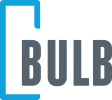
To succeed in a new landscape of increasingly demanding buyers, brands must now learn how to become “customer-obsessed” as the time for “customer-first” is over.
The concept of “customer obsession” means that a company focuses solely on creating an exceptional customer experience. When you are customer-obsessed, the needs of the customer are at the center of everything you do. Everything from sales to marketing support is focused on those needs.
Customer obsession has become an increasingly important concept in the last two years following the events of the pandemic. People are now under increasing economic pressure, whether they are using their money for personal or business purchases, to make sure they are making smart choices. The only way to convince your customers that you should be their first choice is to prove that you are able to put their needs first.
The Reality of Becoming “Customer-Obsessed”
To become “customer-obsessed,” today’s leaders must take several important steps. You can not simply design a customer persona and address it every time you launch a new marketing campaign. True customer centricity requires brands to make their customers feel truly understood, respected, and valued. To achieve this, companies need to invest in the right processes, people, and tools.
For many business leaders, digital transformation is the first step toward customer-centricity. Research by EY on the future of business opportunities shows that meeting changing customer needs is the primary reason companies are investing in technology to transform their business.
A strategy for transforming a “customer first” company into a “customer-obsessed” brand starts with creating the right environment to not only get to know your customers but to serve them at every stage of the customer journey.
So where do you start?
1. Leverage the power of data
All great transformations in the digital age begin with data. The more accurate and in-depth the information you have, the smarter your decisions become. Just as you use real-time data and historical analytics to optimize network performance in a telecommunications company, you can use data about your audience to drive satisfaction.
Regardless of your company’s size or industry the chances are that you are already using some form of data collection tool. Small businesses have tools like website analytics and contact centers to capture customer contact information. Banks and insurance companies track extensive customer information using service and help desk tools and even sales statistics software.
The key to customer obsession is in how you collect and use this data. For example, if you are using a series of chatbots to help you with customer service, the data collected by those bots should be securely stored and analyzed in the same environment as your contact center insights.
Remember that data comes in all shapes and sizes, and it’s up to you to decide what information is most valuable to your business. Qualitative data, such as surveys and feedback forms from customers, can give you more detailed information about your customers’ likes and dislikes but is more difficult to quantify than quantitative data. A combination of the two allows for a more accurate analysis.
Evaluate your current level of data and ask yourself where your information gaps are. Where are you still blindly navigating the customer journey? What tools can you use to make data collection in this area more efficient?
2. Map and Enhance the Entire Customer Journey
Of course, simply collecting data does not do much for your business if you do not know how to use it properly. You need to carefully analyze the information you collect to understand the elements of the customer experience and figure out what you can do to improve it.
At this point, many companies have already started creating their own customer journey maps. If you do not have one yet, now is the time to start creating one. An effective customer journey mapping process requires considering all the points at which your customer might interact with your business, from browsing your website to the moment they start a chat with a bot.
It’s also worth noting that most customers take more than one journey with a company. The adventure your customer goes on to find the perfect solution to their connectivity problem is not the same as the journey they take to buy something. Even during the sales process, such as onboarding a new customer, there are journeys you need to consider.
Take the time to make a list of the key Customer Journeys you need to track and look for ways to improve them. This will give you insight into the Customer Journeys that have the biggest impact on your business:
- Talk to your sales team: what is holding customers back or keeping them from buying again?
- Talk to marketing: what types of problems do customers typically look for help with?
- Listen to your audience: What are your customers talking about in reviews and testimonials?

3. Start Investing in the Right Technology
Once you have an insight into your most important customer journeys, and the pain points that impact your customers during these moments, it’s time to look for ways to innovate and improve. Today, the majority of “customer-obsessed” companies are achieving results because they have the technology to help them collect data, analyze customer data, and respond rapidly to issues.
Let’s explore some of the tools you can implement to establish your position as a customer-obsessed brand, based on specific challenges:
- Challenge #1: Helping the customer succeed: A customer-obsessed company puts the buyer at the heart of everything they do. This means thinking carefully about how you can ensure the success of your customers. A digital onboarding experience where you can provide tailored guidance to your clients on how to use your services could be a good start. Alternatively, you could consider offering active services to help them tackle common problems. For instance, if a telecoms company is concerned about network management, you can offer proactive network management tools.
- Challenge #2: Delivering exceptional service: Customers want to buy from companies they can rely on to provide a great quality of service. This could mean ensuring your clients have immediate support when they need it most, or even allowing clients to access self-service. Empowering your employees with automated tools for diagnostics, troubleshooting, and accessing customer information can be a great way to speed up the service experience, and leave clients impressed.
- Challenge #3: Maintaining agility: Today’s customer-obsessed companies need to be agile, productive, and efficient. This means eliminating repetitive tasks that get in the way of offering amazing customer experiences. The more time your experts spend on mundane projects, the less time they have to think about delighting your customer. Enterprise process automation helps you to reduce repetitive work and to leverage employee creativity where it matters most.
Ready to be More Customer Obsessed?
Customer obsession is not just another trending topic that companies should keep in mind. Being truly customer-obsessed means you need to really understand your customers and find ways to make their lives easier. In other words, you need to treat your customers the way you want to be treated.
Having access to better data and tools to put that data into action will help you make the most of your customer obsession strategy. Contact Bulb Tech today to learn how we can help you discover the power of customer obsession.
Ready to transform your customer service?
Contact us and leverage our Cempresso digital solutions to boost Customer Support efficiency by more than 20%



